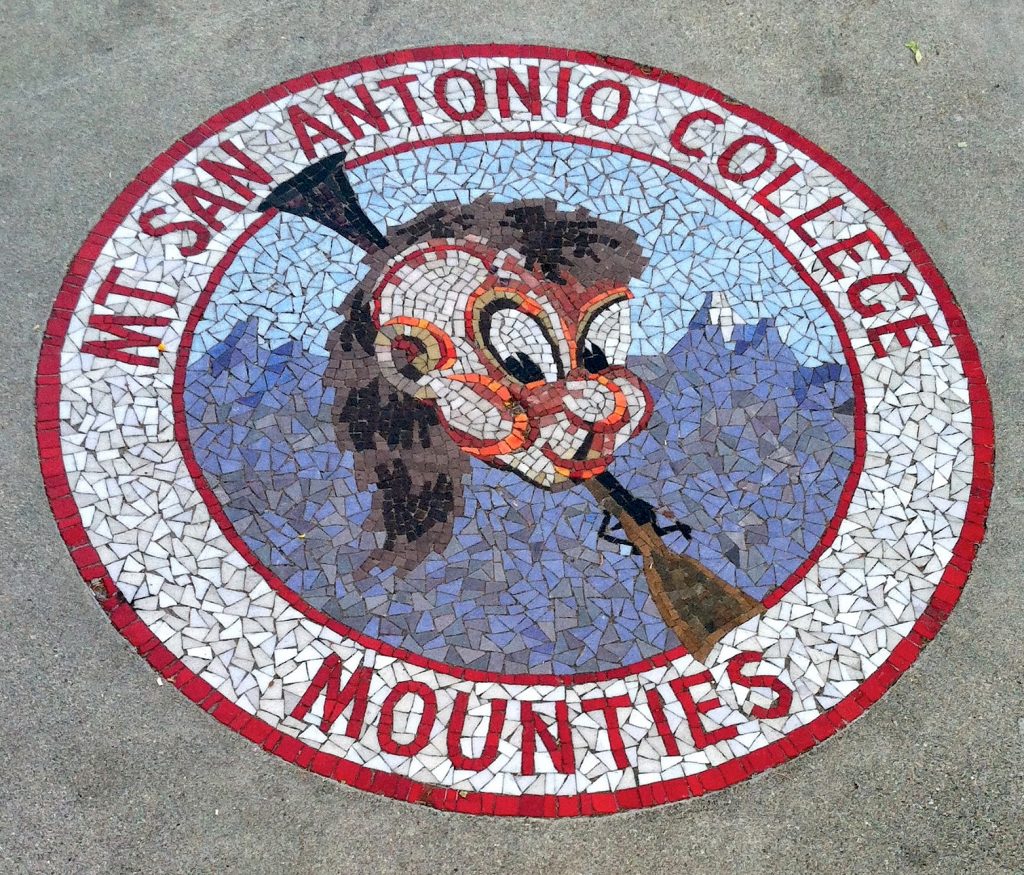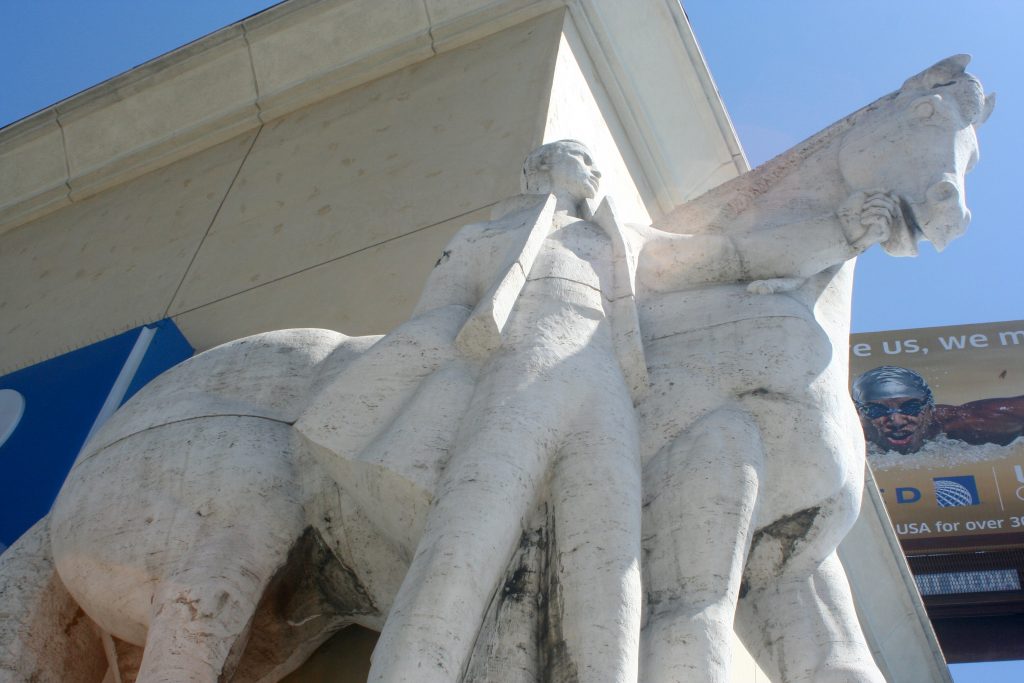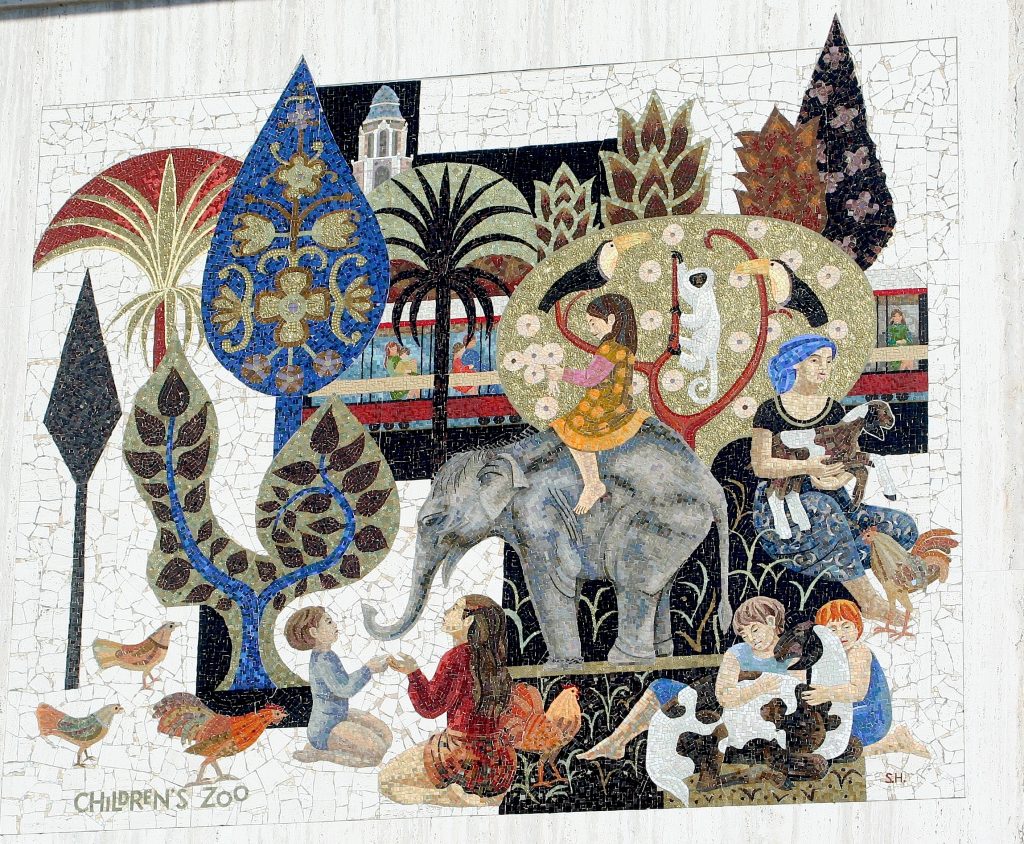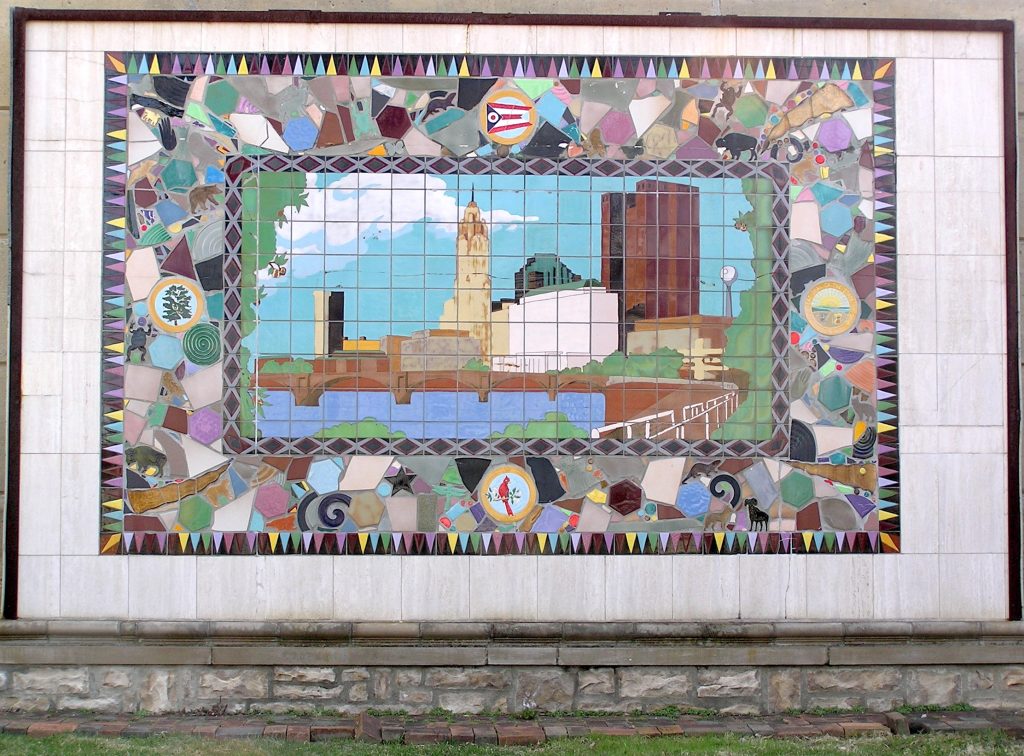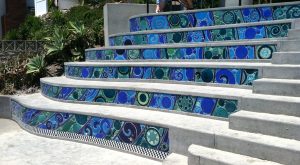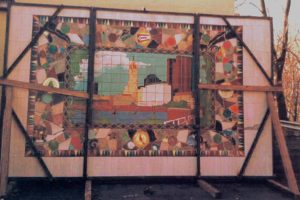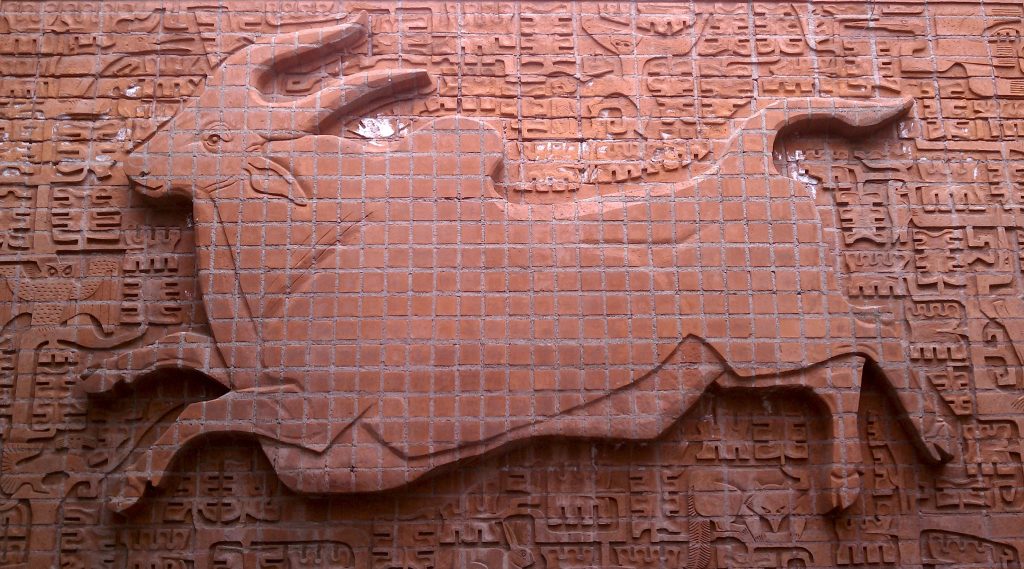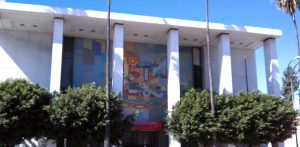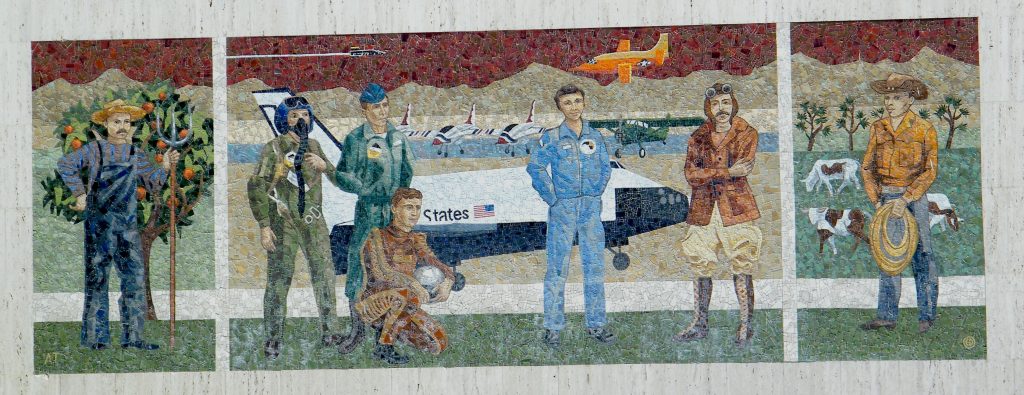With the semester well underway, I am spending time on my campus, grading and teaching, which made me think of one of the campus art completed by the Millard Sheets Studio.
The Garrison Theater and other spaces around the Claremont Colleges come first to mind, along with “Touchdown Jesus” at Notre Dame and the tapestry in the Foley Communication Arts Center at Loyola Marymount. But Mt. San Antonio College (lovingly called Mt. SAC by those in the know) provides a few intriguing examples — and a question of missing art.
As you walk into the newly renovated Mt. SAC library, there is a brightly colored mosaic of “Little Joe,” a retired version of the school’s Joe Mountie the Mountaineer mascot, grinning up from the pavement. Though the faux-Indian facepaint, the coonskin cap, and the rifle are more reminiscent of the Indian mascots and caricatures of 1964-1965, now mostly phased out around collegiate sports, the mosaic still catches the eye, and probably has a Sheets Studio connection (if more likely to be student work than the Studio itself.)

Sue Hertel, “The Water and The Lion,” mural detail, Mt. San Antonio College, Walnut, c. 1965 (from Hall and Pietzsch, comp., 1996)
But the clear Sheets Studio (and friend-of-Sheets Studio) work for Mt. SAC was (is?) the set of library murals created by Susan Hertel and Tom Van Sant. According to the 1996 Mt. SAC history, Van Sant created murals symbolizing the social sciences and humanities; Hertel’s showed physical and biological sciences, with The Bull, The Flowering Tree, The Horse, and (as seen here) The Water and the Lion. From this photograph — all I have seen of the work — it is clearly linked stylistically to the wood panels and mosaic work of the Sheets Studio for Home Savings, especially (at this moment) reminding me of Pomona and Arcadia.
But where are the murals? If on wood panels, they could easily have been removed; canvas murals from the Sheets Studio can also be rolled up. Are they in storage? Covered? Egad, destroyed? I wish we knew more. (I asked around the library in June, but haven’t heard anything.) I hope these murals can be placed back in the public view, ideally at Mt. SAC art gallery or in a public, secure place nearby.
Please be in touch if you know more about these works!
